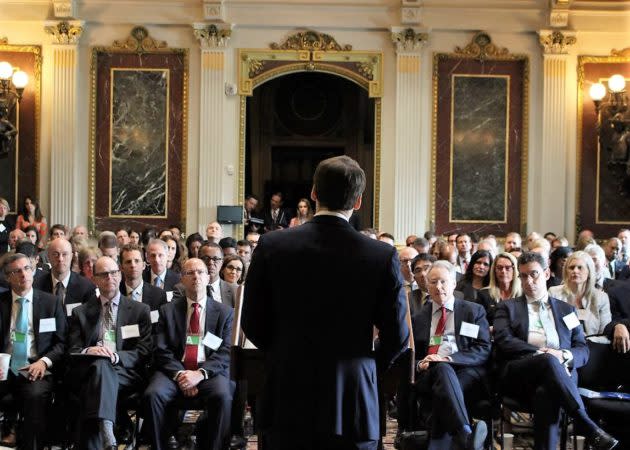White House starts to flesh out AI research plan — and raises its profile with AI.gov

For months, the White House has been talking up artificial intelligence as one of America’s most important tech frontiers. Now we’re starting to see some of the dollar signs behind the talk.
In newly released budget documents, the Trump administration says it wants to split $850 million in civilian federal spending on AI research and development between the National Science Foundation, the National Institutes of Health, the National Institute of Standards and Technology and the Energy Department. This is in addition to $927 million in Defense Department spending requests for AI and machine learning, including $208 million for the Joint Artificial Intelligence Center.
Based on the agency-by-agency breakdowns, NSF would get the lion’s share of the $850 million — specifically, $492 million for “transformative research in artificial intelligence.”
The Department of Energy says it’s seeking $119 million for AI work that would “improve the robustness, reliability, and transparency of Big Data and AI technologies, as well as quantification and development of software tools for DOE mission applications.” About $71 million would go to DOE’s Office of Science, and $48 million would go to the National Nuclear Security Administration, which safeguards the nation’s nuclear arsenal.
The National Institutes of Health doesn’t lay out exactly how much it’s requesting in its budget overview, but it does detail what the money would be used for:
“NIH is focused on the promise of artificial intelligence (AI) and machine learning (ML) for catalyzing advances in basic (e.g., image interpretation, neuroscience, genomic variants and disease risk, gene structure, and epigenomics) and clinical research (e.g., robotic surgery, natural language processing of electronic health record data, inferring treatment options for cancer, reading radiology results). NIH recognizes that there are many areas of biomedical research where novel computing, machine intelligence, and deep learning techniques have the potential to advance human health.”
NIST hasn’t yet provided details about the funds it’s aiming to devote to AI, but its total R&D budget would be trimmed by 8 percent if the administration’s proposal is accepted. NSF would face a 10 percent cut, and NIH would see its total R&D budget reduced by 13 percent.
The White House says fiscal austerity is forcing a narrowing of R&D priorities.
“While recognizing the continued importance of R&D spending to support innovation, fiscal prudence demands a more focused approach to the Federal R&D budget in the context of America’s multi-sector R&D enterprise. This approach prioritizes maintaining peace through strength and ensures U.S. leadership in the Industries of the Future,” the White House said in its R&D overview.
AI is considered one of four Industries of the Future, along with quantum information science, advanced communications systems such as 5G and advanced manufacturing.
Today the White House sent another signal that it wants to raise the profile of AI research by launching a new internet portal about its policy: AI.gov.
The website pulls together the administration’s policies, documents and program descriptions relating to AI.
“The White House’s newly unveiled AI.gov illustrates our whole of government approach to national artificial intelligence policy and the historic strides this administration has made over the past two years,” Michael Kratsios, deputy assistant to the president for technology policy, said in a news release. “We look forward to continued advancements solidifying America’s position as the world leader in AI and ensuring this emerging technology is developed and applied for the benefit of the American people.”
Will the White House’s AI spending plan get through Congress? It’s likely to get some tweaks along the way, but lawmakers have been generally supportive of AI initiatives. In contrast, the White House’s wider plan to trim back on R&D spending is facing pushback from the scientific community and some congressional leaders.
If Congress takes the advice of the American Association for the Advancement of Science, push could come to shove. “If enacted, the Trump administration’s proposed cuts to research and development would derail our nation’s science enterprise,” AAAS CEO Rush Holt said in a statement.
Holt’s objections focus not so much on tech research and development, but on the realms of environmental, energy and biomedical research. He suggests that those realms also represent industries of the future — industries that could be hamstrung by the administration’s proposed cutbacks.
More from GeekWire:
White House convenes AI summit and sets up advisory panel on artificial intelligence
White House initiative will boost artificial intelligence research and data-sharing
Study tracks China’s ‘startling’ challenge to America in artificial intelligence research
White House budget proposal tightens the screws on science, from space to salmon
